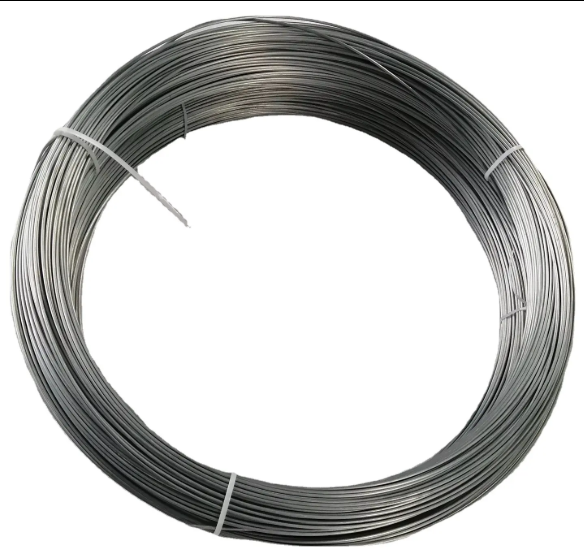Molybdenum rhenium wire, Mo-Re41.5%, Mo-Re47.5%
Molybdenum Rhenium (Mo-Re) Alloy Wire is a high-performance material known for its exceptional strength, high melting point, and outstanding thermal and electrical conductivity. There are mainly two compositions of Molybdenum rhenium alloy-namely Molybdenum with 41.5% Rhenium and Molybdenum with 47.5% Rhenium.
Princeton Powder is a leading supplier of high purity Mo-Re alloy wire in the United States.
Material | Molybdenum rhenium wire, rod, and bar |
Common composition | Mo-Re 41% and Mo-Re 47.5% |
Standard | ASTM B386, ASTM B387 |
Grade | Per your request |
| Density | 10.7-16 g/cm3 |
Melting Point | 2623 ℃-3300 ℃ |
Dimensions | Customized |
Surface Treatment | Pickling or Polishing |
Description of Molybdenum rhenium wire, rod, and bar
Molybdenum rhenium wire, rod, and bar are high-performance materials made from a blend of molybdenum and rhenium, offering exceptional strength and thermal stability. These alloys are ideal for high-temperature applications in aerospace, electronics, and semiconductor industries due to their superior resistance to heat, corrosion, and wear. Available in various forms, including wire, rod, and bar, they are used in precision components like thermocouples, heating elements, and vacuum furnace parts.
Chemical Compositions of Molybdenum rhenium alloy
Product Name | Main Type | Size (mm) |
Mo-Re Alloy Wire | MoRe14%, | 0.1, 0.2, 0.25, 0.3, 0.35, 0.5 |
1~17 | ||
0.2 min. ×(10-500)×1000 max. | ||
Mo-Re Alloy Target | Customized per requirement | |
*Customized content ratios and dimensions can be available according to specific requirements.
Application
- Rocket Nozzles and Engine Components: Mo-Re alloys are used in aerospace applications due to their ability to withstand extreme temperatures
- Semiconductor and Electronics: Mo-Re alloy is commonly used in thermocouples, high-temperature heating elements and filament wires
- Heating Elements and Structural Components: Mo-Re wire and rod are used in vacuum furnaces for applications such as sintering, brazing, and heat treatment
- High-Temperature Crucibles: Molybdenum rhenium alloy are used in producing crucibles for melting metals and other materials at high temperatures in controlled environments.
- Surgical Instruments: Mo-Re alloys are used in high-temperature medical equipment and medical sensors for accurate temperature measurement in diagnostics and treatments.
- Gas Turbines: Molybdenum rhenium alloys are used in gas turbine blades and other high-stress components in power generation due to their ability to endure extreme conditions without losing strength.
- Nuclear Reactors: Mo-Re alloys are also utilized in nuclear reactors for components that are exposed to high temperatures and radiation.
FAQ-Molybdenum Rhenium Alloy
What are the common forms of Molybdenum Rhenium Alloy available?
Mo-Re alloys are available in various forms including wire, rod, bar, sheet, and tube. The specific form you need depends on the application, such as wire for thermocouples, rods for high-temperature furnace parts, or bars for aerospace components.
How is Molybdenum Rhenium Alloy manufactured?
Molybdenum Rhenium alloys are typically manufactured through processes like powder metallurgy, vacuum arc remelting, or casting, followed by extrusion or drawing into the desired form. The alloy is produced in controlled conditions to ensure the desired properties of strength, conductivity, and thermal resistance.
Is Molybdenum Rhenium Alloy resistant to corrosion?
Yes, Mo-Re alloys exhibit excellent resistance to corrosion, especially at high temperatures. The combination of molybdenum and rhenium enhances the alloy’s ability to withstand oxidative and corrosive environments, making it suitable for use in harsh conditions like high-heat processing or high-stress industrial applications.
Can Molybdenum Rhenium Alloy be welded or machined?
While Molybdenum Rhenium alloys can be welded and machined, they require specialized equipment and expertise due to their hardness and high melting points. It’s important to follow specific procedures to maintain the integrity of the alloy during processing.

